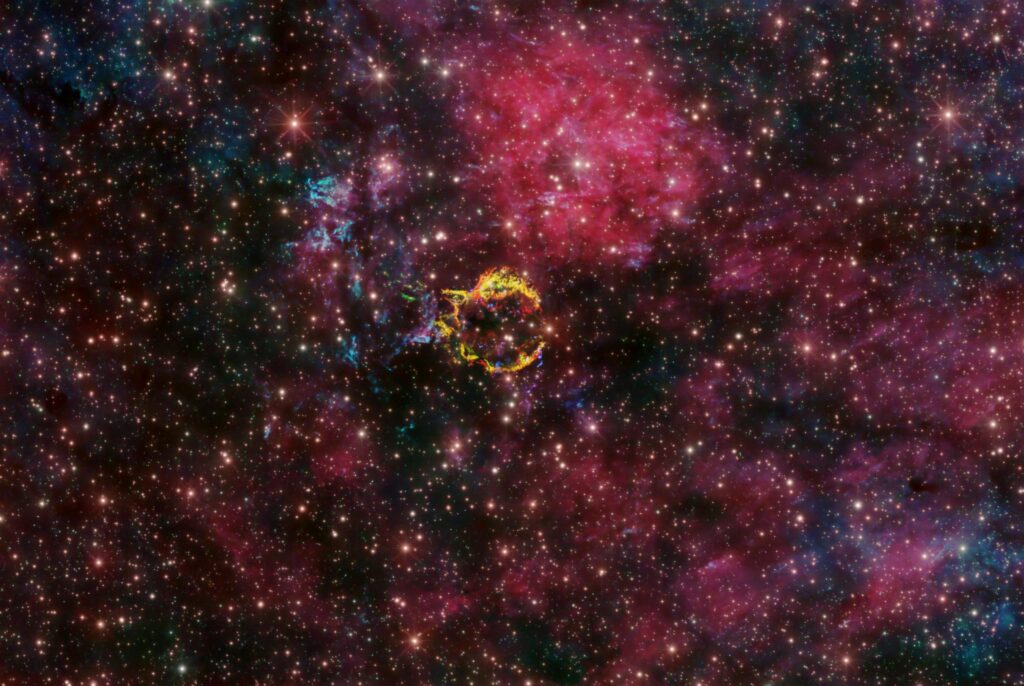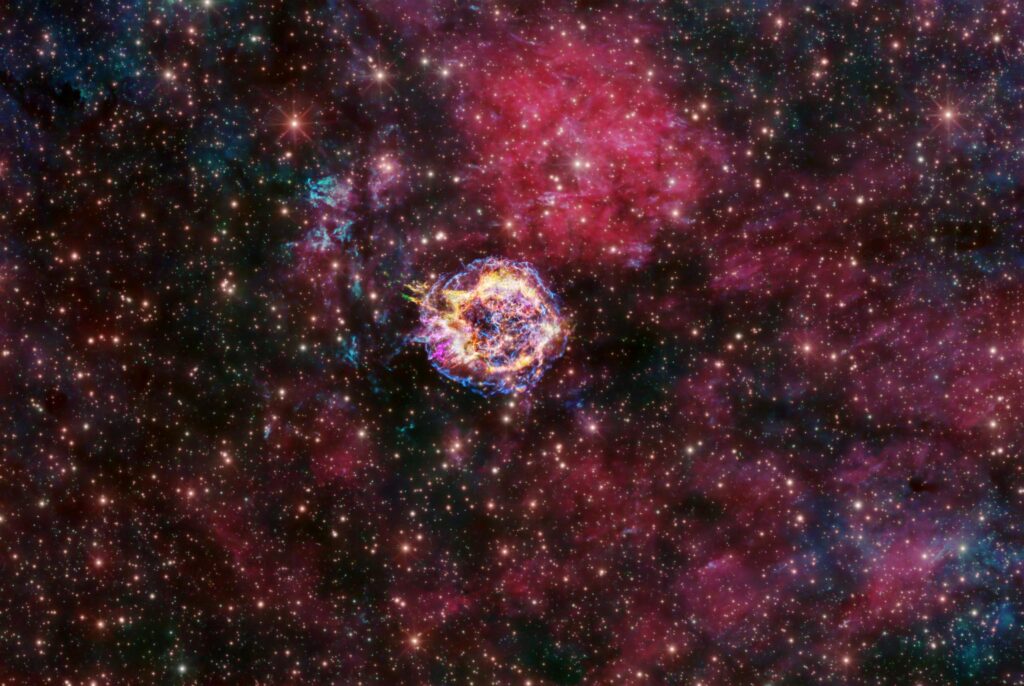Participants on the AstroBin platform published very spectacular astrophotography. It demonstrates Cassiopeia A — the remnant of one of the most “fresh” supernovae in the Milky Way.

AstroBin is an image hosting platform and social network for astrophotographers. From time to time, they combine their efforts to create a new impressive image of a celestial body.
This time their choice fell on Cassiopeia A. It is located at a distance of 11 thousand light-years from Earth and represents one of the youngest supernova remnants in the Milky Way. It is believed that the light from its flare should have reached our planet sometime at the end of the XVII century. However, there is no record of this event in the historical chronicles. There is an assumption that shortly before its explosion, the star ejected a large amount of matter. It enveloped the star tightly and absorbed the light from the flare.
Only in 1947, astronomers discovered a powerful radio source in the constellation Cassiopeia, which was later correlated with the remnant of a supernova. Subsequently, it was possible to identify it in the optical range.
In total, 13 people took part in the work to create a picture of Cassiopeia A: 11 photographers, an editor and a stacker. It took them 525 hours and 54 minutes to get the final version of the image. It demonstrates a very complex structure of the nebula, consisting of matter ejected during the explosion of the star and incandescent gas.

Astrophotographers also published a second version of the image, including data from the Chandra Space Telescope. The photo makes it possible to better visualize the structure of the nebula and the shock waves that arise during its interaction with the surrounding gas clouds. Observations show that the substance of the supernova remnant has a temperature of about 30 million degrees and is expanding at a speed of 4-6 thousand km/s.
Recall that earlier we published a picture of Cassiopeia A taken by the James Webb Space Telescope.
According to https://www.astrobin.com
Follow us on Twitter to get the most interesting space news in time
https://twitter.com/ust_magazine


